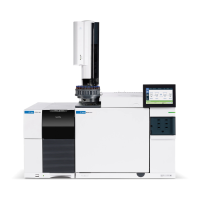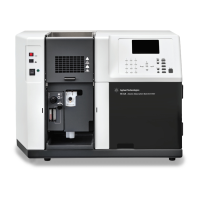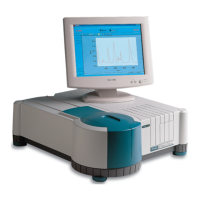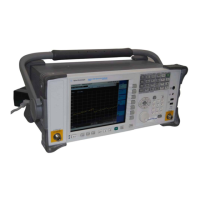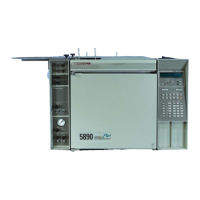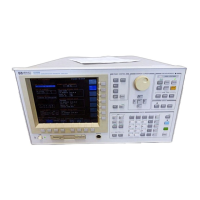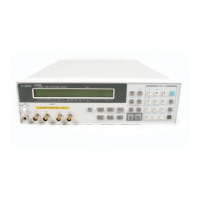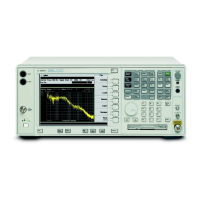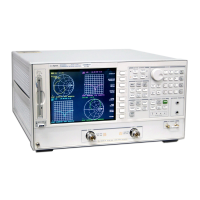62 5975/5977 Series MSD Operation Manual
3 Operating in Electron Ionization (EI) Mode
The GC/MSD Interface
The GC/MSD interface (Figure 9 on page 63) is a heated conduit into the MSD
for the capillary column. It is bolted onto the right side of the analyzer
chamber, with an O-ring seal. It has a protective cover which should be left in
place.
One end of the GC/MSD interface passes through the side of the gas
chromatograph and extends into the GC oven. This end is threaded to allow
connection of the column with a nut and ferrule. The other end of the
interface fits into the ion source. The last 1 to 2 mm of the capillary column
extend past the end of the guide tube and into the ionization chamber.
The GC/MSD interface is heated by an electric cartridge heater. Normally, the
heater is powered and controlled by Thermal Aux #2 heated zone of the GC.
The interface temperature can be set from OpenLAB or from the gas
chromatograph. A sensor (thermocouple) in the interface monitors the
temperature.
The GC/MSD interface should be operated in the 250 to 350 C range. Subject
to that restriction, the interface temperature should be slightly higher than the
maximum GC oven temperature, but never higher than the maximum column
temperature.
The extractor ion source requires a tip seal (G3870-20542). The standard EI
sources constructed of stainless steel or inert material do not need a tip seal.
See also
“To Install a Capillary Column in the GC/MS Interface Using the
Self-Tightening Column Nut”on page 37.
WARNING
The GC/MSD interface operates at high temperatures. If you touch it when it is hot,
it will burn you.

